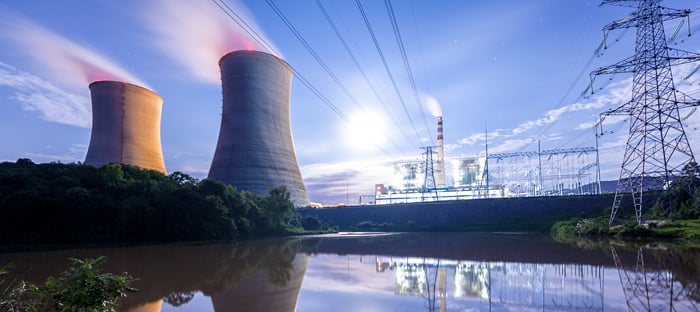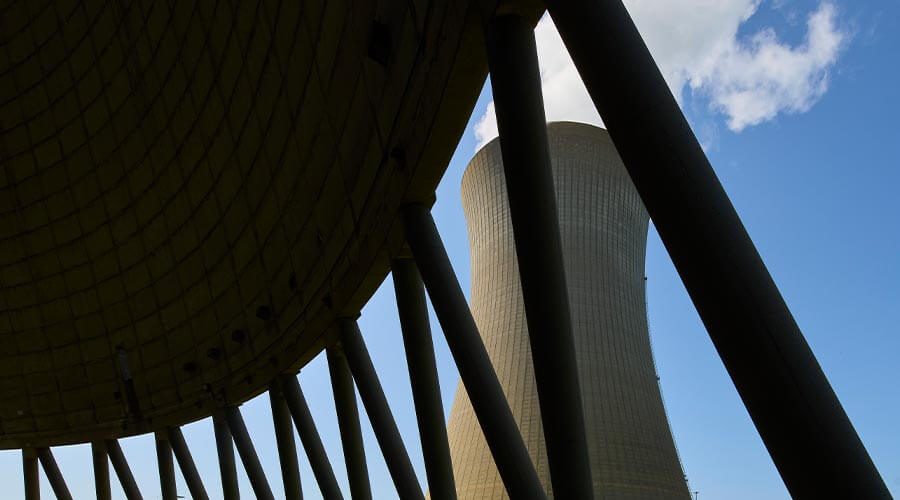Climate change, or global warming, is an issue everyone is familiar with, but one that’s difficult to personally connect to daily. Its effects often appear slowly over time and become noticeable only after change has occurred. Plus, doing something often includes forming new habits and making small sacrifices. Getting through the day presents enough challenges.
Still, climate change is one of those issues everyone should make time for because its effects are already all around us. They manifest through frequent and more severe storms, heat waves and droughts. Heatwaves can strain your HVAC system, natural disasters can interrupt the global supply chain, causing food and product shortages, and storms can damage infrastructure.
Reducing your personal carbon footprint is one of the best ways to help combat climate change.
What is your carbon footprint?
Before we talk about those simple steps, let’s talk about your personal carbon footprint. Your footprint is a measurement of the amount of greenhouse gases (GHG) emitted into the environment attributable to your day-to-day activities. The average carbon footprint for a person in the U.S. is 16 tons.
Carbon emissions you are responsible for include any direct emissions that involve the burning of fossil fuels, such as driving your car, or indirect emissions from activities that consume purchased energy, like using electricity.
Thankfully, there are plenty of simple steps you can make right now that will reduce your personal carbon footprint.
Step 1: Reduce your energy consumption
Hearing an energy company tell you to use less energy might give you pause. Totally understandable. We mean it, though. Creating a safe, reliable, and sustainable future is a big part of our mission. If the first step toward that future is reducing energy consumption, we’re cool with that.
Here’s how to reduce your carbon footprint at home
- Turn off lights when you leave a room. This is a good habit to form and especially useful depending on what type of lightbulb you use. Incandescent light bulbs are the least efficient, giving off 10% light and 90% heat.
- Use energy-efficient appliances. Large appliances consume a lot of electricity. If that energy isn’t carbon free, the result is more carbon in the atmosphere as that energy is produced. An added benefit? Energy-efficient appliances can have a big, positive impact on your electric bill..
- Change the way you heat and cool your home. This can be as simple as updating your heating, ventilation and air conditioning (HVAC) system to be more energy efficient. It should also include your water heater – and the temperature you heat your water to.
- Use cold water to wash clothes. Using hot water when washing clothes requires 75% more energy to heat the water. Switching to cold reduces demand on the grid and upstream carbon emissions associated with it.
Step 2: Switch to clean energy and renewable energy sources
Choosing clean and renewable energy sources – energy that is produced with little or no greenhouse gas (GHG) emissions – furthers your ability to reduce your carbon footprint. Clean energy sources include solar, wind and nuclear power.
Note that there is a difference between clean energy and renewable energy. Clean energy is divided into two types: renewable and sustainable.
- Renewable energy refers to energy generated from natural resources, such as wind, solar, and water. All renewable resources are considered "clean." In 2021, renewable energy sources accounted for about 12.4% of total U.S. primary energy consumption, according to the U.S. Energy Information Administration.
- Sustainable energy refers to energy sources that will not be depleted for the foreseeable future. Nuclear energy is considered sustainable due to its lack of pollution and abundant supply.
If you want to learn more about clean energy, our Clean Energy Explained article digs into the topic.
Step 3: Plant trees and other plants
There’s a reason trees have become an ipso facto symbol of climate change efforts. Trees and plants act as carbon sponges, absorbing carbon dioxide from the atmosphere, storing it in their trunks and in the ground, and releasing oxygen in return.
They do more than that, however:
- Trees provide shade. Plant deciduous trees on the south and west side of your home. The shade will cool your house in the summer and let the sun warm your home in the winter, according to the U.S. Department of Energy.
- Trees save money. Three properly placed trees could help you save up to 30% of your energy use. They’re one of many ways you can lower your energy bill.
- Trees boost your HVAC efficiency. Trees or shrubs that shade your AC unit will allow it to work more efficiently, cooling your home for less.
Start small by expanding your flower bed or finding a spot in the yard for a couple new trees. When you’re ready, consider volunteering with or donating to organizations that focus on reforestation.
Step 4: Use less water
More than 3% of U.S. energy is used to pump and treat water, so using less water in our daily lives can have a significant impact on greenhouse gas emissions. For most of us, tamping down on how much water we use is relatively easy. Start with:
- Turning the water off while brushing. You could save three or four gallons of water a day
- Leaky toilet? Fix it. A persistent leak can waste 200 gallons of water per day
- Run your dishwasher only when its full. You might keep 100 pounds of carbon dioxide from making its way into the atmosphere
Step 5: Change your eating habits
This step might come as a surprise. How does food affect climate change? It’s a good question. The answer is all the work it takes to get food from the farm to our table and beyond.
Technology fuels farming, too. Most machines that help grow and process food, carry from the farm or factory to the store to your home are fueled by gasoline, oil, and other carbon emitting products. Even when food is prepared and disposed of, carbon comes in to play.
Compared to our other recommendations, this step could be the most difficult. Changing the way we eat – from where we buy groceries all the way to what we consume and how we store leftovers and dispose of waste – is a heavy lift. But if we’re serious about reducing our carbon footprint, it’s worth giving it a try. Here’s where to begin:
- Start eating local. This is less about the food itself and more about the carbon emissions associated with preparation and long-distance transportation.
- Reduce red meat consumption. Methane produced by cattle is one of the largest contributors to greenhouse gases. More than that, meat production requires extensive grasslands which are often created by cutting down forest. If every U.S. household went meatless once a week, we could lower carbon emissions by 992 million pounds on that day alone.. That simple change can have an impact on your pocketbook, too. Households that decide to eliminate meat altogether save nearly $1,200 annually.
- Reduce your use of plastics. Choose biodegradable materials when storing leftovers. Plastics are made from fossil fuels.
- Compost. Composting reduces the amount of methane and carbon released by organic matter.
Step 6: Change how you get around
Transportation is the largest source of carbon emissions in the U.S, according to the Center for Climate and Energy Solutions. Passenger cars and light-duty trucks contribute half of all U.S. transportation sector carbon emissions. The average vehicle emits 6 to 9 tons of carbon dioxide annually.
There are many ways to change how we get around and reduce our carbon footprint. Some easy, some easier than you’d think, and, let’s be honest, one or two that require some dedication.
- Switch up your ride. While purchasing an electric vehicle to replace your fossil fuel burning minivan is perhaps the best choice, you can significantly reduce your carbon footprint by buying a car with better gas mileage. A car that gets 25 miles per gallon (mpg) will produce 1.7 tons less carbon dioxide a year than a 20-mpg car.
- Hop the bus. Consider taking the bus or other public transportation instead of driving to your destination. Communities with great public transportation options could reduce the U.S. carbon footprint by as much as 37 million metric tons annually.
- Bike or walk. If the corner store is only a couple blocks away, choose to bike or walk there rather than drive. Not only will you reduce your carbon footprint, you’ll get exercise and an opportunity to catch up with neighbors.
- Carpool. U.S. drivers emit a combined 1.8 billion tons of CO2 a year. If more individuals chose carpooling or public transportation, we could drastically reduce overall carbon emissions. There are financial benefits too. The average American spends $200 or more on gas per month, or $2,400 a year. In a four-person carpool, that translates to a savings of more than 75% annually, or $1,500, in fuel and repair costs.
Step 7: Support carbon-free initiatives
Once you’ve done all you can to reduce your carbon footprint, consider helping others reduce theirs. Support organizations and initiatives that are finding new and innovative ways to reduce carbon emissions and combat climate change.
- If you’re ready to plant trees beyond your backyard, volunteer with an organization like The Arbor Day Foundation. The organization offers several reforestation programs.
- The U.S.-based Clean Air Task Force focuses its work on reducing and eliminating air pollution. It also advocates for the adoption of clean energy technology, like nuclear power and geothermal energy.
- Form your own committee to help reduce your community’s carbon footprint. Plant a community garden or advocate for clean energy community aggregation options.
Taking simple steps now to reduce your carbon footprint is the best way you can help combat climate change, whether that’s planting trees, taking public transportation, or switching to a clean energy supplier like Energy Harbor.
Contact Energy Harbor to get started
Ready to add carbon offsets to your net zero strategy?






